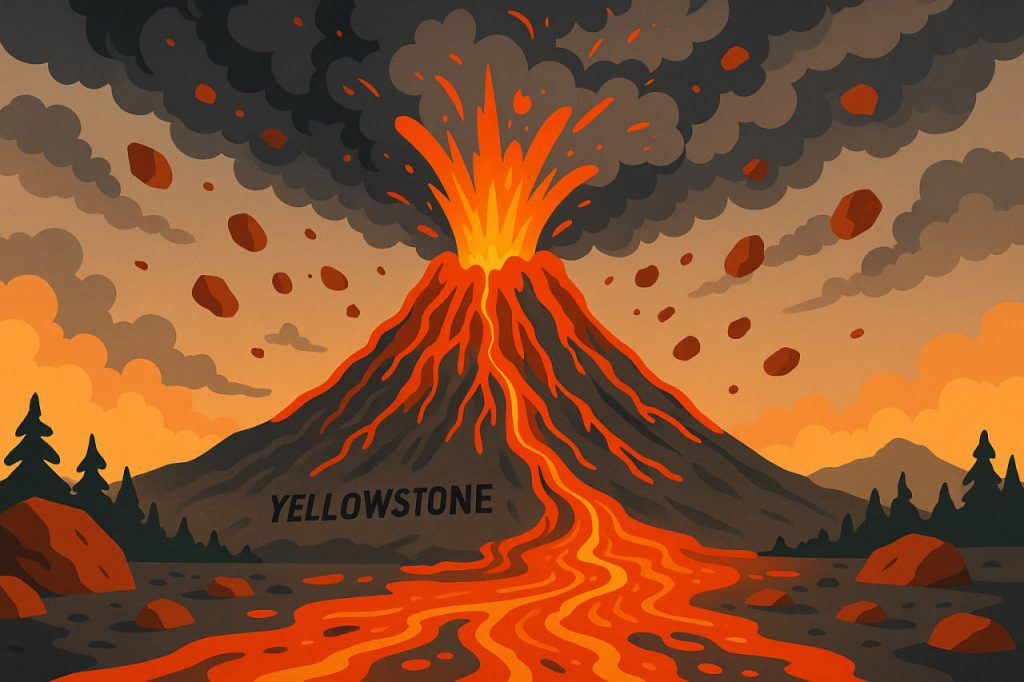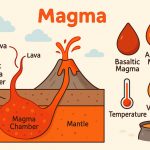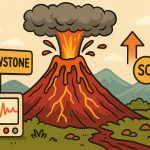The Yellowstone supervolcano is capable of producing eruptions thousands of times larger than typical volcanoes. Unlike smaller eruptions, which mainly affect local regions, a Yellowstone super-eruption would have global consequences. Its past eruptions, such as the one 640,000 years ago, blanketed entire continents with ash. If it erupted today, it would fundamentally reshape the environment, climate, and human society. Scientists, however, emphasize that the probability of such an eruption in the near future is extremely low.
Immediate Local Effects
The eruption would begin with a violent explosion, releasing massive amounts of magma, ash, and gases into the atmosphere. The surrounding area, including much of Wyoming, Montana, and Idaho, would be devastated. Lava flows could extend for tens of kilometers, destroying infrastructure and ecosystems. Thick layers of volcanic ash would cover nearby cities and farmland, making the region uninhabitable. Earthquakes and ground collapse would accompany the eruption, further increasing destruction.
Ash Fall Across North America
One of the most dangerous aspects of a Yellowstone eruption would be the spread of volcanic ash. Winds could carry ash across the United States within days, covering much of North America in centimeters to meters of ash. This would collapse buildings, contaminate water supplies, and make agriculture impossible for years. Transportation would halt, as air travel and road systems would be disrupted by reduced visibility and ash damage. Millions of people would be forced to evacuate affected regions.
Global Climate Consequences
The eruption would eject enormous amounts of sulfur dioxide and ash particles into the atmosphere. These aerosols would block sunlight, leading to a volcanic winter. Global temperatures could drop several degrees for months or even years. Crop failures would occur worldwide, leading to food shortages and famine. While short-term cooling would dominate, long-term greenhouse gas emissions, especially carbon dioxide, could eventually contribute to warming after the aerosols settled. This combination would create severe instability in Earth’s climate systems.
Impact on Human Civilization
Modern civilization would face unprecedented challenges. Global trade, communication, and food distribution systems would collapse under the pressure of climate disruption and economic breakdown. Major cities far from Yellowstone would still suffer from air pollution, contaminated water, and food scarcity. Social unrest and migration would increase as countries struggled to adapt. Unlike ancient societies, modern populations are more dependent on global supply chains, making the effects potentially more devastating.
Scientific Monitoring and Preparedness
Today, Yellowstone is one of the most monitored volcanic systems in the world. Networks of seismographs, GPS stations, and gas sensors track changes in magma movement, ground deformation, and emissions. Scientists believe they would detect warning signs years or decades before a super-eruption. While humanity cannot prevent such an event, early detection could save millions of lives through evacuation and preparation. This monitoring also provides valuable knowledge about how Earth’s largest volcanic systems behave.
Conclusion
If the Yellowstone supervolcano were to erupt, the effects would be catastrophic on both local and global scales. Entire regions would be destroyed by lava and ash, while global climate disruptions would affect agriculture, economies, and human survival. Although the chance of such an event in the near future is extremely low, studying Yellowstone helps scientists prepare for potential super-eruptions elsewhere. Awareness and scientific monitoring remain humanity’s best defense against these rare but powerful natural disasters.
Please don’t wait for trouble to come to your home – prepare for it in advance. If you’re interested in how to do this, please leave a comment.
Glossary
- Supervolcano – a volcano capable of eruptions far larger than typical volcanic events.
- Magma – molten rock beneath the Earth’s surface.
- Volcanic ash – fine rock particles ejected during eruptions, capable of spreading globally.
- Sulfur dioxide (SO₂) – a volcanic gas that contributes to cooling by blocking sunlight.
- Volcanic winter – global cooling caused by ash and aerosols blocking solar radiation.
- Carbon dioxide (CO₂) – a greenhouse gas that contributes to long-term warming.


